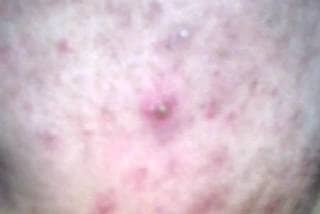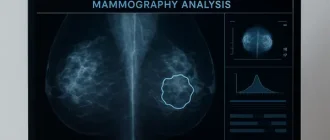Finding a hard lump under the skin on your thigh can be unsettling. That moment when your fingers brush against something unexpected—firm, unyielding, and out of place—can spark a flurry of questions. Is it harmless, or should you be worried?
Benign vs. Malignant Hard Lumps on the Thigh
| Type | Percentage (%) |
|---|---|
| Benign | 95% |
| Malignant | 5% |
This chart presents the estimated ratio of benign vs. malignant hard lumps on the thigh. The vast majority of cases are benign, with malignant lumps occurring in a small percentage of cases.
What Could It Be? From Common Culprits to Rare Suspects
Hard lumps under the skin can stem from a variety of causes, ranging from benign quirks of the body to signals worth investigating. Here’s a breakdown of the most likely possibilities, grounded in current medical knowledge:
- Lipomas: The Soft-but-Firm Fat Pockets
Lipomas are benign tumors made of fatty tissue. While they’re often soft, some can feel surprisingly firm depending on their depth or surrounding tissue. According to the American Academy of Dermatology, they’re incredibly common—about 1 in 1,000 people will develop one at some point. They’re usually painless and slow-growing, but their presence on the thigh might catch your attention due to the area’s muscle density. - Epidermoid Cysts: Trapped Skin Cells Gone Rogue
These lumps form when skin cells get trapped beneath the surface and multiply, creating a sac filled with keratin. The Cleveland Clinic notes they can harden over time, especially if inflamed or irritated—say, from tight clothing rubbing against your thigh. They’re typically benign but might feel like a stubborn pebble under your skin. - Fibromas or Fibroadenomas: Tough Tissue Nodules
Fibromas are growths of fibrous connective tissue that can pop up anywhere, including the thigh. While more common in other areas (like the breast), they occasionally appear in soft tissues of the legs. They’re non-cancerous, but their dense, rubbery texture can make them stand out. - Swollen Lymph Nodes: Your Body’s Alarm System
A hard lump near the groin area of your thigh could be a lymph node reacting to infection or inflammation nearby—think a recent cut, bug bite, or even a systemic illness. The Mayo Clinic explains that these nodes can feel firm and tender, though they usually shrink once the trigger resolves. - Something Serious: When Cancer’s on the Table
Though rare, a hard, fixed lump that grows quickly or feels irregular could signal a sarcoma—a type of cancer originating in soft tissues or bones. The American Cancer Society reports that soft tissue sarcomas account for less than 1% of all cancers, but early detection is key. Red flags include pain, rapid size increase, or a lump larger than a golf ball (about 5 cm).
Common Causes of Hard Lumps Under the Skin on the Thigh
This chart presents the estimated distribution of common causes of hard lumps under the skin on the thigh. Lipomas are the most frequent cause, followed by epidermoid cysts and fibromas, while hematomas and malignant tumors occur less frequently.
Why the Thigh? A Perfect Spot for Lumps
The thigh’s mix of muscle, fat, and connective tissue makes it a prime location for these growths. Daily activities—walking, sitting, or wearing snug jeans—can also irritate underlying tissues, sometimes drawing attention to lumps that might otherwise go unnoticed.
What to Watch For: Symptoms That Tell a Story
Finding a hard lump under your thigh’s skin is one thing—but figuring out what it’s trying to tell you is another. Your body’s got a way of dropping hints, and these symptoms can act like clues in a detective game. Let’s break them down with some real-world comparisons so you can see how they might fit your experience.
- Size and Growth: Is It a Slow Bloomer or a Speedy Sprinter?
Imagine your lump as a guest at a party. Is it the type that quietly lingers in the corner, barely changing over weeks or months—like a lipoma that’s happy to just hang out? Or is it crashing the scene, growing fast enough to double its size in a few weeks, like an uninvited plus-one that demands attention? Grab a ruler or your phone’s measuring app—track it weekly. A lump that’s ballooning quicker than a loaf of bread in the oven might need a closer look. - Pain: A Silent Neighbor or a Noisy Nuisance?
How does it feel when you press on it? Picture a pebble in your shoe—annoying but tolerable—that’s how a benign cyst might act, with a mild twinge only when you poke it. Now, contrast that with a toothache that throbs even when you’re sitting still. If your lump’s got that deep, unprovoked ache—or it stings like a fresh bruise when touched—it’s waving a louder flag. Pain can hint at inflammation (think swollen lymph nodes) or, in rare cases, something pressing on nerves. - Mobility: A Rolling Stone or a Rooted Rock?
Give it a gentle nudge with your fingers. Does it slide around like a marble under a rug, slipping easily beneath the skin? That’s a classic move for lipomas or cysts—free spirits just floating in the fatty layers. Or does it feel cemented in place, like a boulder sunk into the ground, refusing to budge? Lumps anchored to muscle or bone—like some sarcomas—tend to stay put. This one’s a biggie: mobility often separates the “probably fine” from the “let’s check this out.” - Extras: Any Drama on the Surface?
Take a peek at the skin overhead. Is it business as usual—smooth and unbothered, like a calm lake? Or is it throwing a tantrum—red and warm like a sunburn, or maybe puckered and dimpled like an orange peel? These “extras” can signal irritation (say, a cyst getting mad at your jeans) or infection. If the skin’s changing color or texture faster than a mood ring, it’s adding a plot twist worth noting.
Picture It: Putting the Clues Together
Let’s play a quick “what if.” Say your lump’s the size of a grape, hasn’t grown in a month, rolls around when you nudge it, and sits under normal-looking skin—no pain, no fuss. Sounds like a chill lipoma throwing a low-key party. Now flip it: a golf-ball-sized lump that’s doubled in three weeks, aches like a sore muscle even at rest, sticks like glue, and sits under hot, red skin. That’s more like a siren blaring for a doctor’s visit. Your reality’s probably somewhere in between—so compare and contrast with what you’re feeling.
Modern Solutions: How Science Tackles These Lumps
Gone are the days when “wait and see” was the only option. Today’s treatments blend precision, technology, and patient comfort. Here’s what’s on the table, based on cutting-edge medical approaches:
- Ultrasound-Guided Diagnosis
Not sure what’s lurking under there? High-resolution ultrasound can map the lump’s size, shape, and composition in minutes—painlessly. A 2023 study in the Journal of Diagnostic Medical Sonography highlights its accuracy in distinguishing benign cysts from suspicious masses. - Minimally Invasive Removal
For benign lumps like lipomas or cysts causing discomfort or cosmetic concerns, outpatient procedures shine. Techniques like liposuction-assisted lipoma removal or tiny-incision cyst extraction—often under local anesthesia—leave barely a trace. The American Society of Plastic Surgeons praises these for quick recovery times. - Cryotherapy: Freezing the Problem Away
For smaller, superficial lumps (like certain cysts), cryotherapy uses liquid nitrogen to freeze and destroy abnormal tissue. It’s fast, effective, and doesn’t require cutting, per recent dermatology reviews. - Targeted Biopsies for Clarity
If cancer’s a possibility, image-guided needle biopsies let doctors snag a sample with pinpoint accuracy, minimizing damage. Results guide next steps—whether it’s monitoring or more aggressive action. - Advanced Therapies for Sarcomas
If a lump turns out malignant, 2025’s toolkit includes precision radiation (like proton therapy) to zap tumors while sparing healthy tissue, or immunotherapy drugs that rev up your immune system to fight cancer cells. The National Cancer Institute notes these are game-changers for early-stage sarcomas.
Treatment Methods for Hard Lumps on the Thigh
| Treatment Method | Percentage (%) |
|---|---|
| Observation | 40% |
| Medication | 20% |
| Surgical Removal | 30% |
| Radiation/Chemotherapy | 5% |
| Other | 5% |
This chart illustrates the estimated distribution of treatment methods for hard lumps on the thigh. Observation and surgical removal are the most common approaches, while medication and radiation/chemotherapy are used less frequently.
Your Next Move: Don’t Guess, Assess
No one expects you to play doctor, but you can take charge. Start by tracking the lump—snap a photo, note its size with a ruler, and jot down changes over a week or two. Then, see a healthcare pro. Dermatologists, general practitioners, or even orthopedic specialists (if it’s near muscle or bone) can steer you right. Bring your notes; they’ll love the detective work.
The Bottom Line
A hard lump under your thigh’s skin might be a quirky lipoma, a feisty cyst, or—rarely—something demanding attention. Modern medicine offers tools to uncover the truth and fix it with minimal fuss. So, don’t let it linger in your mind or under your skin—get it checked, and reclaim your peace.
Sources: The American Academy of Dermatology, Cleveland Clinic, Mayo Clinic, American Cancer Society, and recent studies (e.g., Journal of Diagnostic Medical Sonography, 2023).
About the Author
Reyus Mammadli is the author of this health blog since 2008. With a background in medical and biotechnical devices, he has over 15 years of experience working with medical literature and expert guidelines from WHO, CDC, Mayo Clinic, and others. His goal is to present clear, accurate health information for everyday readers — not as a substitute for medical advice.







